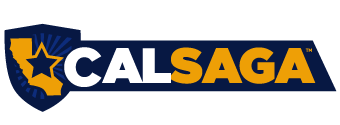POSITIONING YOURSELF AS AN EMPLOYER OF CHOICE
Jeff Davis, Group Vice President, Solution Sales, WorkWave
It comes as no surprise that hiring (and retention) is still a hot topic in the security industry. While there’s no magic answer to overcoming the challenges of today’s competitive market, we know the key to attracting talent is to position yourself as an employer of choice. There are the obvious variables you should consider when making your open positions competitive (like wages and benefits, for example). The other part of that strategy is making sure the right applicants know who you are, or how to find out more about you.
That’s easier said than done. You can post an opening to a job board and post about it on your website or social media, but that’s only the first step in becoming more visible. You need to make sure that job seekers can find you, they can understand your website, and the information you’re presenting is clear. To achieve those things, you need to start thinking like a marketer.
Start by comparing a traditional recruitment funnel against a traditional marketing funnel. They really aren’t all that different, especially in the beginning stages. Awareness is at the top of each process and where you have the most opportunity to position yourself as an employer of choice. This is your first touch point with potential job candidates and the stage where you can set the framework for the quantity and quality of your candidate leads. To improve awareness, think about:
- Improving your SEO. To those outside the marketing field, SEO may sound daunting, but it’s a readily available tool you can draw on to make your company — and website — more “findable” by job seekers. Using what you can find from SEO, you can add keywords to job descriptions, organic and paid ads, blog posts and webpages to help increase visibility where you need it.
- Expanding your content. Don’t only think about job postings and descriptions when your goal is hiring (although those are important, too.) Think about your overall brand. Are you demonstrating your company’s values, or highlighting reasons why someone would want to choose you as a place of employment over a competitor? Think about how you’re showing these things. Can you highlight testimonials from current employees? Can you demonstrate a walk-through of a “day in the life” of what the open position would require? Be accurate (while also being conscious of not sharing any information from your clients or contracts) and take what you find to the applicant directly — whether that’s social media, job boards, or traditional in-person recruitment events.
Gain more marketing advice and other best practices based on current industry trends.
After you’ve begun engaging with a pool of potential job applicants, then you can start narrowing your focus on the middle and end stages of the hiring funnel. Plan to dedicate real time to job descriptions and listings.
Pro tip: Familiarize yourself with the rules of specific job boards. Some will remove your job listings if you ask certain information, like age or background checks. If that criterion is required for your screening process, make sure you’re including the qualifying criteria as required responses in your applicant tracking and hiring system.
In your job listings themselves, don’t be limited by wage and benefit information. Can you offer jobs that are more convenient to an applicant based on proximity to residence? Are you able to offer shift flexibility, a hiring bonus, or a guaranteed bonus after a certain period on the job? Even if it’s seemingly small, any detail can set you apart in the market — especially as job flexibility becomes a bigger consideration for today’s job seekers. Just make sure you’re being accurate. Remember, the goal should be to attract quality applicants, not quantity.
Marketing is a crucial step in staying ahead of the competition in a tight labor market. If you’re looking for help in website design, SEO or other opportunities to improve your recruitment marketing, TEAM Software by WorkWave can help.
 For the last 20 years, Jeff has focused on technology, working in sales and marketing to executive leadership, with five years specializing in human resources technology. Within his leadership role at WorkWave, which acquired TEAM Software in 2021, Jeff serves as a subject matter expert delivering marketing and service solutions to service contractors worldwide.
For the last 20 years, Jeff has focused on technology, working in sales and marketing to executive leadership, with five years specializing in human resources technology. Within his leadership role at WorkWave, which acquired TEAM Software in 2021, Jeff serves as a subject matter expert delivering marketing and service solutions to service contractors worldwide.


 Tony Unfried, CEO of CSA360, holds a master’s degree in Public Affairs and Criminal Justice from Indiana University, where he graduated with honors. While enrolled in his master’s program, Tony worked for The TJX Companies, Inc., leading the region in loss prevention and moving the company toward technology use in Security. Tony went on to join the most significant security company in Indiana, managing more than 500 employees and 50 sites, including the Indiana Convention Center, Bankers Life Fieldhouse, and Ruoff Home Mortgage Music Center. Seeing a noticeable gap in technology use in the physical security sector, Tony created his first security software application, launched at the Super Bowl in 2012, and recognized twice for Excellence in Mobile Technology by Techpoint. Tony has also spoken on Tech in Physical Security on panels with ASIS and IAVM.
Tony Unfried, CEO of CSA360, holds a master’s degree in Public Affairs and Criminal Justice from Indiana University, where he graduated with honors. While enrolled in his master’s program, Tony worked for The TJX Companies, Inc., leading the region in loss prevention and moving the company toward technology use in Security. Tony went on to join the most significant security company in Indiana, managing more than 500 employees and 50 sites, including the Indiana Convention Center, Bankers Life Fieldhouse, and Ruoff Home Mortgage Music Center. Seeing a noticeable gap in technology use in the physical security sector, Tony created his first security software application, launched at the Super Bowl in 2012, and recognized twice for Excellence in Mobile Technology by Techpoint. Tony has also spoken on Tech in Physical Security on panels with ASIS and IAVM. Shaun Kelly joined Tolman & Wiker Insurance Services in 2005. He specializes in all lines of property and casualty insurance for industries including contract security firms, agriculture, construction, oil and gas. Shaun received a BS in Business Administration with a major in Finance from California State University in Fresno, California. He is an active member of several industry associations, including the Association CALSAGA, the Kern County Builders Exchange and the Independent Insurance Agents of Kern County. Shaun can be reached at 661-616-4700 or
Shaun Kelly joined Tolman & Wiker Insurance Services in 2005. He specializes in all lines of property and casualty insurance for industries including contract security firms, agriculture, construction, oil and gas. Shaun received a BS in Business Administration with a major in Finance from California State University in Fresno, California. He is an active member of several industry associations, including the Association CALSAGA, the Kern County Builders Exchange and the Independent Insurance Agents of Kern County. Shaun can be reached at 661-616-4700 or  Ashlee Cervantes holds her Masters in Business Administration from University of California, Davis. She is a seasoned security professional, with over a decade of management experience overseeing teams who specialize in Armed Security and Executive Protection. She is based in Northern California where she serves as the Executive Director of Operations with Guardian Protection Force Inc (GPF). Since 2019 she has served as the Northern California Director of CALSAGA. In her time in the industry Ashlee has grown both teams of security professionals, management and revenues four-fold.
Ashlee Cervantes holds her Masters in Business Administration from University of California, Davis. She is a seasoned security professional, with over a decade of management experience overseeing teams who specialize in Armed Security and Executive Protection. She is based in Northern California where she serves as the Executive Director of Operations with Guardian Protection Force Inc (GPF). Since 2019 she has served as the Northern California Director of CALSAGA. In her time in the industry Ashlee has grown both teams of security professionals, management and revenues four-fold.  Martin P. Vigodnier, Esq.
Martin P. Vigodnier, Esq. Jaimee K. Wellerstein, Esq
Jaimee K. Wellerstein, Esq
